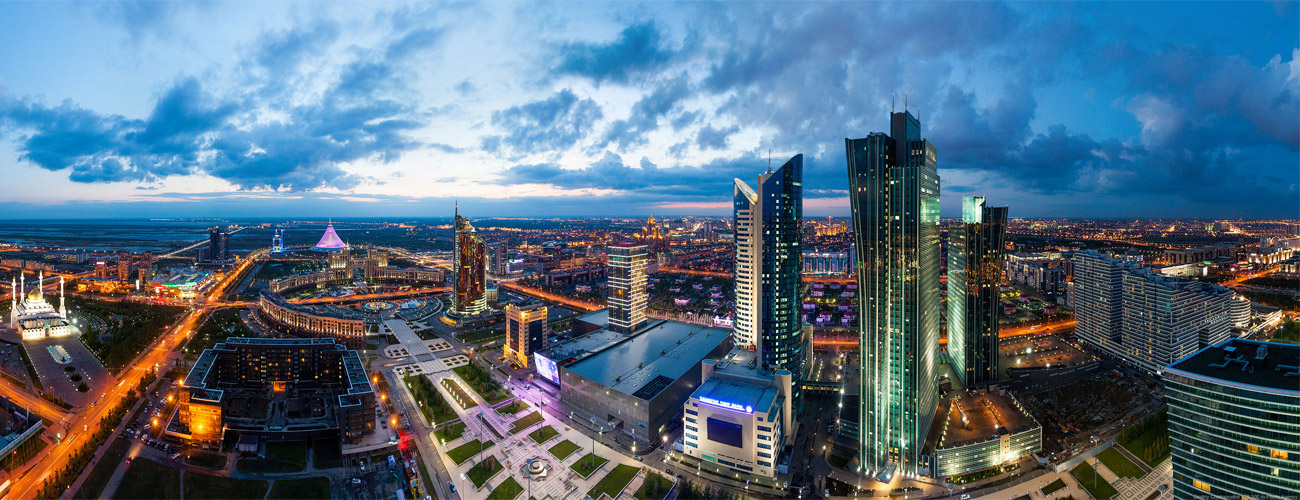
Kazakhstan to Host Offshore Yuan Center
Publication: Eurasia Daily Monitor Volume: 13 Issue: 48
By:

Many observers both inside and outside Central Asia have noticed China’s rising economic influence there, supplanting the region’s traditional hegemon, Russia. In yet another sign of China’s growing economic clout in Eurasia, Astana International Financial Center governor and former National Bank chairman Kairat Kelimbetov announced, on February 29, that Kazakhstan will build an offshore yuan center. According to Kelimbetov, the offshore Chinese currency center will serve the entire Central Asian region in anticipation of rising regional trade and investment with China (The Shanghai Daily, February 29). He added that Kazakhstan will also expand its cooperation with the Shanghai stock and gold exchanges as part of a broader effort to encourage more Chinese financial institutions to assist his country in developing Astana as an international financial center. The choice of Astana is not accidental: Kazakhstan has Central Asia’s most dynamic economy, far ahead of neighboring Kyrgyzstan, Tajikistan, Turkmenistan or Uzbekistan.
The purpose of China’s offshore yuan centers is to assist foreign investors in skipping a step in their currency transactions when doing business with the Chinese mainland. Through clearing facilities provided by Chinese financial institutions such as the Industrial and Commercial Bank of China or the Bank of China, the offshore yuan centers allow clients to convert foreign currencies directly into yuan without first converting their money into dollars.
The Astana offshore yuan center is the latest step in China’s efforts at internationalizing the renminbi (RMB—another name for the yuan), which began in 2007 with the creation of China’s first offshore (“dim sum”) yuan bond center in Hong Kong (Bank of China, September 2011). Eight years later, there are now 14 offshore yuan centers worldwide, which all facilitate the use of the yuan in global trade and finance. Outside Hong Kong and Macao, in Asia there are now yuan centers in Taipei, Singapore, Kuala Lumpur and Bangkok, and negotiations are underway to establish one in Seoul as well as Qatar (China Daily, May 25, 2015). Other cities hosting offshore yuan centers include London, Paris, Zurich, Frankfurt, Luxembourg, Sydney and Nairobi, with discussions underway to open yuan clearing banks in Russia, Hungary and Chile.
While China’s main center for free trade in its national currency is still its offshore yuan market in Hong Kong (Caixin, January 26), the opening of the Astana offshore yuan center is significant in that it acknowledges the realities of China’s growing bilateral trade with the Central Asian republics. Central Asia sends its oil, natural gas, uranium and grain exports eastward to fuel the Chinese economy. These overland commodities shipments are of great value to Beijing because, unlike maritime energy imports from the Middle East, they cannot be interdicted by pirates or hostile navies.
But Kazakhstan’s value to China extends beyond its utility as a source of raw materials. In China’s “One Belt, One Road” infrastructure strategy, announced in 2013 by Chinese President Xi Jinping, Kazakhstan occupies a significant Eurasian transit position. Cargo trains originating in various Chinese cities shuttle across Kazakhstan’s territory to Europe, a trade corridor that China seeks to expand. According to Kazakhstan’s ambassador to China, Shakhrat Nuryshev, by the end of 2015, the state railway company Kazakhstan Temir Zholy (KTZ) expected to transport 250,000 Twenty Foot Equivalent Unit (TEU) containers on its trunk lines for transshipment onward to Russia, Europe, Central Asia and the Caspian region. Moreover, KTZ is seeking to boost this trade volume to 500,000 TEU by 2020—a 200 percent increase in four years (The Astana Times, December 15, 2015).
According to Kelimbetov, the Bank of China and the Industrial and Commercial Bank of China already operate in Kazakhstan, and CITIC Bank is in discussions to set up an office in Astana. Along with the new Asia Infrastructure Investment Bank, chartered last year, these financial institutions are making China the prime fiscal resource for post-Soviet Central Asia (The Shanghai Daily, February 29). Relatedly, China’s involvement in joint ventures with Kazakhstan are massive and growing. Last September, Erlan Karin, the director of the Kazakhstan Institute of Strategic Research, noted that, in the wake of President Nursultan Nazarbayev’s visit to China earlier in the year, joint Kazakhstani-Chinese projects to be implemented before the end of 2015 were worth $45–50 billion (The Times of Central Asia, September 19, 2015).
Financial stability in Kazakhstan is essential for China’s economic priorities to come to fruition, and this Central Asian republic is entering an international fiscal vacuum that no Russian, European, or Western financial institutions have shown significant interest in stabilizing. The Astana offshore yuan center will thus provide Kazakhstan with a fiscal lifeline that it desperately needs, as last year its economy suffered due to record low oil prices. On August 20, 2015, Prime Minister Karim Massimov announced that Kazakhstan would move to a free-floating currency after a plunge in oil prices and devaluations in Russia and China, its two largest trading partners. In the wake of Massimov’s announcement, the tenge plummeted 22 percent in a single day (see EDM, September 18, 2015; Primeminister.kz, News.nur.kz, August 20, 2015; Bloomberg, October 5, 2015). Nevertheless, the Astana offshore yuan center demonstrates Chinese confidence in not only Kazakhstan’s economy but the region as a whole. Even if doing little more than providing opportunities for Kazakhstanis to cash out their tenge for yuan, the yuan center in Astana will help post-Soviet Central Asian regimes by acting as a kind of safety net against social unrest caused by economic volatility.
Such Chinese fiscal initiatives in Central Asia come at the expense of former colonial master Russia. Meanwhile, the United States and the European Union, interested up to now almost solely in military bases and access to energy reserves, are also conspicuous by their absence in this finance-driven “Great Game version 2.0.” Current Chinese policies toward Central Asia are strictly financial and economic and bereft of the hectoring lectures on political plurality, human rights and free market economies that accompany most Western regional initiatives. But what remains to be seen in Kazakhstan and the whole of Central Asia is whether Chinese fiscal policy will remain strictly commercial, or eventually prove to carry its own political baggage as well.




